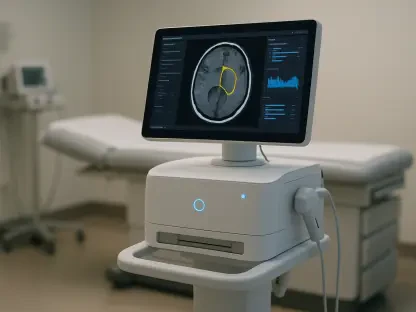Hospice care providers are navigating an increasingly complex regulatory landscape, with telehealth policies and widespread fraud emerging as primary concerns. Insights from a recent survey involving 112 hospice professionals illuminate the pressing issues anticipated to impact the industry significantly. As hospices strive to deliver compassionate and efficient care, they face hurdles that could reshape their operations and service delivery models.
Central Regulatory Issues
Telehealth Policies
The significant influence of the pandemic on telehealth policies in hospice care has led to transformative changes in service delivery. Telehealth has played a crucial role, enabling virtual face-to-face recertifications and extending care to remote patients, particularly during staffing shortages. However, the reliance on temporary waivers for these practices has introduced an element of uncertainty. Legislators and providers are advocating for permanent telehealth solutions, recognizing their dual advantages: enhanced patient access and the provision of necessary physical presence when vital. Nevertheless, the unresolved status of telehealth policies continues to pose significant challenges for hospices, potentially impacting future service models.
The benefits of telehealth are manifold, particularly in ensuring that hospice services remain accessible across various geographic locations. This has been especially critical amidst the fluctuations in healthcare staffing levels. However, the looming expiration of temporary waivers raises substantial concerns. The temporary nature of these waivers has created an unstable foundation for care providers who have integrated telehealth into their standard practices. With a strong consensus around the potential of telehealth to revolutionize hospice care, the sector remains in a state of flux, awaiting legislative clarity on the future of these crucial policies.
Program Integrity Concerns
Rising instances of fraud have brought program integrity concerns to the forefront of hospice regulations. These fraudulent activities, such as enrolling ineligible patients or “license flipping” to escape detection, have drained millions of dollars from Medicare. This ongoing issue has not only created a financial strain on the system but has also placed legitimate hospice providers under intense regulatory scrutiny. The instances of Medicare fraud underscore the need for stringent measures and improved oversight to maintain the integrity of hospice programs.
Legitimate hospice providers are grappling with the burden of persistent audits, which often lack consistency in their findings and interpretations. These audits impose considerable financial and operational strains, diverting resources away from patient care. In a field already challenged by limited staffing and resources, the threat of being unjustly scrutinized alongside fraudulent operators is a significant concern. Programs like the Special Focus Program (SFP) by the Centers for Medicare & Medicaid Services (CMS) aim to identify and rectify low-performing hospices but have been criticized for their flawed methodologies, which may inadvertently target high-quality providers. This misidentification further complicates the regulatory environment, calling for a reassessment of current oversight mechanisms.
Additional Concerns and Insights
Regulatory Changes and Oversight
A substantial portion of hospice providers anticipates that increasing regulatory changes and oversight will continue to be a significant challenge. Nearly 21% of survey respondents highlighted the necessity of monitoring new quality measures and adapting to evolving regulations. This heightened scrutiny, although intended to prevent malpractice, often imposes additional pressures on reputable providers striving to maintain compliance and high-quality care. The need for continuous regulatory vigilance can disrupt operational stability and strain financial resources, making it difficult for hospices to focus solely on patient care.
Hospice providers must navigate a labyrinth of regulations, each demanding meticulous documentation and adherence. The complexity of these regulatory requirements can lead to unintentional non-compliance, even among well-intentioned providers. The potential for increased oversight is viewed with caution, as it can heavily impact operational workflows. Nevertheless, providers are also aware that regulatory measures are crucial for ensuring the overall integrity and quality of hospice services. The challenge lies in balancing these stringent requirements with the practical aspects of delivering compassionate and effective patient care.
Staffing and Public Awareness
In addition to regulatory concerns, the hospice industry faces significant challenges related to staffing and public awareness. Staffing shortages have been a persistent issue, further exacerbated by the regulatory demands that necessitate meticulous compliance and quality maintenance. The pressures of regulatory adherence can deter potential candidates from pursuing careers in hospice care, thereby intensifying the staffing crisis. Ensuring adequate staffing levels is critical for maintaining high standards of care and fulfilling regulatory requirements, making it an area of ongoing concern for providers.
Public awareness about hospice services remains another critical issue. Misconceptions and a lack of understanding can hinder proper utilization of hospice care, impacting patient outcomes. Efforts to enhance public awareness are essential, not only for improving service utilization but also for fostering a better understanding of the benefits and scope of hospice services. Addressing these challenges requires a concerted effort to educate the public while simultaneously working to resolve internal staffing issues. By focusing on these areas, hospices can ensure that they are better equipped to meet the needs of their patients and maintain regulatory compliance.
Inconsistent Auditing Practices
Auditing practices within the hospice sector have revealed significant inconsistencies, adding to the operational burdens faced by providers. These inconsistencies primarily arise from varied interpretations and applications of audit findings by different auditors, leaving providers uncertain about compliance expectations. The lack of uniformity in audit processes can result in undue scrutiny and additional strain on hospice operations. This inconsistency is particularly concerning for providers who adhere to regulations but are subjected to varying degrees of scrutiny based on the auditor’s perspective.
Gulfside Healthcare Services in Florida serves as a prime example of how increased audit activities have necessitated an expansion of team resources. This expansion, while essential for managing audit-related activities, also highlights the operational and financial strain placed on legitimate hospices. The unpredictable nature of audits can divert resources from direct patient care, impacting the overall efficiency and effectiveness of hospice services. Improving the consistency and transparency of auditing practices is crucial for providing clear compliance expectations and reducing undue burdens on hospice providers.
Special Focus Program’s Dichotomy
The Special Focus Program (SFP), designed to elevate quality standards within the hospice sector, faces criticism for its implementation and methodology. Stakeholders argue that the program’s criteria might inadvertently target compliant hospices based on erroneous data, rather than identifying genuinely poor-performing entities. This misidentification has led to legal actions and increased scrutiny of the SFP’s design, as providers demand more judicious and accurate implementation processes. The challenge lies in ensuring that the program effectively distinguishes between high-quality providers and those needing improvement without causing undue harm to compliant hospices.
The suspension of the SFP by the previous presidential administration for review underscores the need for a thorough reassessment of its criteria and methodology. Ensuring that the program accurately identifies low-performing hospices is critical for maintaining the integrity and quality of hospice care. By addressing these concerns, the SFP can better fulfill its goal of enhancing quality standards and protecting patient interests without unfairly penalizing reputable providers. This necessitates a collaborative effort between regulatory bodies and hospice providers to refine and improve the program’s implementation.
The Enhabit Inc. Case
Enhabit Inc. has voiced significant concerns regarding the Special Focus Program’s criteria, particularly regarding how hospices are flagged for further scrutiny. The company’s dissatisfaction stems from the identification of hospices with commendable quality scores as low-performing entities based on flawed criteria. This misidentification not only affects the flagged hospices but also has wider implications for consumer perceptions and the overall hospice care market. By inaccurately targeting high-performing providers, the program inadvertently harms those committed to delivering high-quality care.
The broader impact of these misidentifications extends beyond individual hospices, influencing public trust and market dynamics within the hospice sector. The case of Enhabit Inc. highlights the need for regulatory programs to employ accurate and fair criteria in evaluating hospice performance. Ensuring that these programs are grounded in reliable data and transparent methodologies is essential for maintaining the credibility and effectiveness of hospice regulations. Addressing these issues is critical for fostering a regulatory environment that supports quality improvement while protecting the interests of both providers and patients.
Future of Telehealth
The future of telehealth within the hospice sector remains a topic of crucial importance, given its demonstrated benefits during the pandemic. Telehealth has proven invaluable in reaching patients effectively and providing supplemental support services. However, the impending expiration of telehealth flexibilities poses significant uncertainties for providers. There is a concerted push for Congress to make these temporary telehealth integrations permanent, a move that would modernize hospice care benefits and eliminate the regulatory uncertainties currently faced by providers.
The permanent integration of telehealth could streamline service delivery, making hospice care more accessible and efficient. By providing a stable regulatory framework for telehealth, hospices can continue to leverage technology to enhance patient care. This would also ensure that the sector is better prepared for any future healthcare emergencies, maintaining continuity of care under various circumstances. The transition toward permanent telehealth solutions is seen as a vital step in modernizing hospice services, ensuring that patient needs are met with the highest standards of care and efficiency.
Clear Pathways Forward
Hospice care providers are contending with an increasingly intricate regulatory landscape, with telehealth policies and pervasive fraud emerging as key concerns. These challenges are highlighted by a recent survey of 112 hospice professionals who identified the most pressing issues likely to have a significant impact on the industry. As hospices work diligently to offer compassionate and efficient care, they confront obstacles that could fundamentally alter their operations and service delivery models. The intricacies of telehealth regulations require providers to navigate new technological and administrative complexities. Simultaneously, the prevalence of fraud in the sector demands rigorous oversight to ensure ethical standards and financial integrity are maintained. These multifaceted challenges necessitate adaptive strategies and robust compliance measures, emphasizing the need for ongoing education and resource allocation to uphold the quality and integrity of hospice care in this evolving environment.









